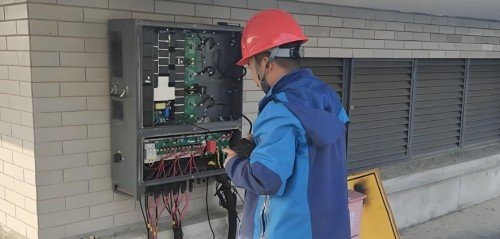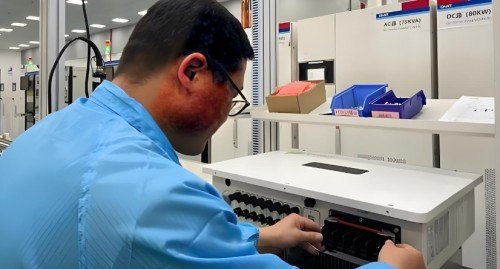Inverter prices can vary greatly depending on several key factors. Understanding these components can help you make an informed decision when purchasing an inverter for your solar system or other applications.
Inverter Type
The type of inverter you choose plays a major role in its price. There are different inverter types, each with specific characteristics that affect their cost.

- String Inverters1: These are the most common and are generally more affordable than other types. They are suitable for simple systems but may not be the best choice for roofs with shading issues.
Price Range: $500 - $2,000 - Microinverters2: Microinverters are installed at the panel level and can provide more granular control. However, they are typically more expensive than string inverters due to their advanced features.
Price Range: $100 - $250 per unit (for each panel, you’ll need one per panel) - Hybrid Inverters3: These inverters integrate with energy storage systems, such as batteries. While they are more expensive, they offer additional features like backup power during outages.
Price Range: $1,500 - $4,000
Power Rating and Capacity
The power rating and capacity of an inverter are directly proportional to its price. Higher power ratings and larger capacities usually come with higher price tags.

| Power Rating | Suitable for... | Price Range |
|---|---|---|
| 1 - 3 kW | Small homes, apartments | $500 - $1,500 |
| 3 - 6 kW | Medium homes, small businesses | $1,500 - $2,500 |
| 6 kW and above | Large homes, commercial use | $2,500 - $4,000+ |
- Higher capacity4: Inverters that handle higher power outputs (measured in kW) will typically cost more, as they require more sophisticated components to handle larger loads.
- Efficiency5: Higher-rated inverters that offer better efficiency might also carry a premium.
Technology and Features
The technology and additional features an inverter offers will also influence its price. Advanced technology can improve efficiency and provide additional benefits.

- MPPT (Maximum Power Point Tracking)6: Inverters with MPPT tracking optimize energy production, particularly in systems with varying sunlight conditions. These tend to be more expensive.
Price Range: Additional $200 - $500 - Grid-Tied vs. Off-Grid: Off-grid inverters are generally more costly due to the added complexity of battery integration and power management.
Price Range for Off-Grid: $1,500 - $5,000 - Smart Features7: Inverters with monitoring apps, Wi-Fi connectivity, and data tracking tend to cost more.
Price Range: Additional $100 - $300
Quality and Brand
Brand reputation and the quality of materials used in manufacturing the inverter are significant price determinants. High-quality brands with a history of reliability usually have higher prices.

- Premium Brands: Established brands like Huawei, SMA, and Sungrow may cost more but offer higher reliability, longer lifespans, and excellent customer support.
Price Range for Premium Brands: $1,500 - $4,000 - Budget Brands: Lesser-known brands might be cheaper but may not offer the same longevity or customer service.
Price Range for Budget Brands: $500 - $2,000
Material Quality and Construction
The materials and build quality of the inverter can affect both the initial price and its longevity. More durable, high-quality components can increase the cost.
- Heat Management: Inverters with superior cooling systems and heat-resistant materials often carry a premium price.
Price Range: Additional $100 - $500 - Durability: Inverters designed for harsh weather conditions or those built with top-tier components tend to be more expensive.
Price Range: $1,000 - $3,000
Warranty and After-Sales Service
Inverters that come with a longer warranty and better after-sales support typically cost more, but they can provide greater peace of mind and value in the long run.

- Warranty: Many inverters offer a standard 5-10 year warranty, but extended warranties are available for an additional cost.
Price Range for Extended Warranty: $200 - $800 - After-Sales Service: Inverters that come with comprehensive support, including maintenance services and troubleshooting, are priced higher.
Price Range: $300 - $1,000+ (depends on service package)
Installation and Associated Costs
The installation of an inverter may also add to its overall cost. The complexity of the installation depends on the type of inverter and the system setup.

- Installation Fees: Depending on the installer and the location, installation fees can add anywhere from $500 to $2,000 or more to the overall cost.
Price Range: $500 - $2,000 - Integration with Other Systems: If the inverter is part of a larger system (such as solar panels or energy storage), additional integration costs may apply.
Price Range for System Integration: $1,000 - $4,000
Location and Availability
The location and availability of inverters can also influence the price, especially if you're sourcing from a region with higher shipping or import duties.

- Shipping and Import Costs: If you're purchasing an inverter from a different country, additional shipping costs, customs fees, and import taxes can significantly increase the overall price.
Price Range for Shipping/Import Costs: $100 - $1,000 - Local Availability: Inverters that are readily available in your region might be priced lower than those that need to be specially ordered or imported.
Price Range for Local Purchase: Lower (up to 20% cheaper)
Conclusion
The price of an inverter is determined by a variety of factors, including the type, capacity, features, quality, brand, warranty, installation costs, and where it’s purchased from. When evaluating inverter prices, consider what you need from the system, and balance the upfront cost with long-term performance and support.
Footnote:
-
This link explains what String Inverters are, their cost-effectiveness, and suitability for simple solar systems. ↩
-
This link provides details on Microinverters, their advanced features, and why they are ideal for shaded systems. ↩
-
This link highlights the capabilities of Hybrid Inverters, including their integration with batteries and backup power features. ↩
-
This link explains how Higher capacity inverters support larger loads and why they are more expensive. ↩
-
This link highlights how Efficiency impacts inverter pricing and performance, making high-efficiency models more valuable. ↩
-
This link explains how MPPT (Maximum Power Point Tracking) optimizes energy production and why it adds to inverter costs. ↩
-
This link highlights the Smart Features like Wi-Fi and monitoring apps that increase convenience and impact pricing. ↩




